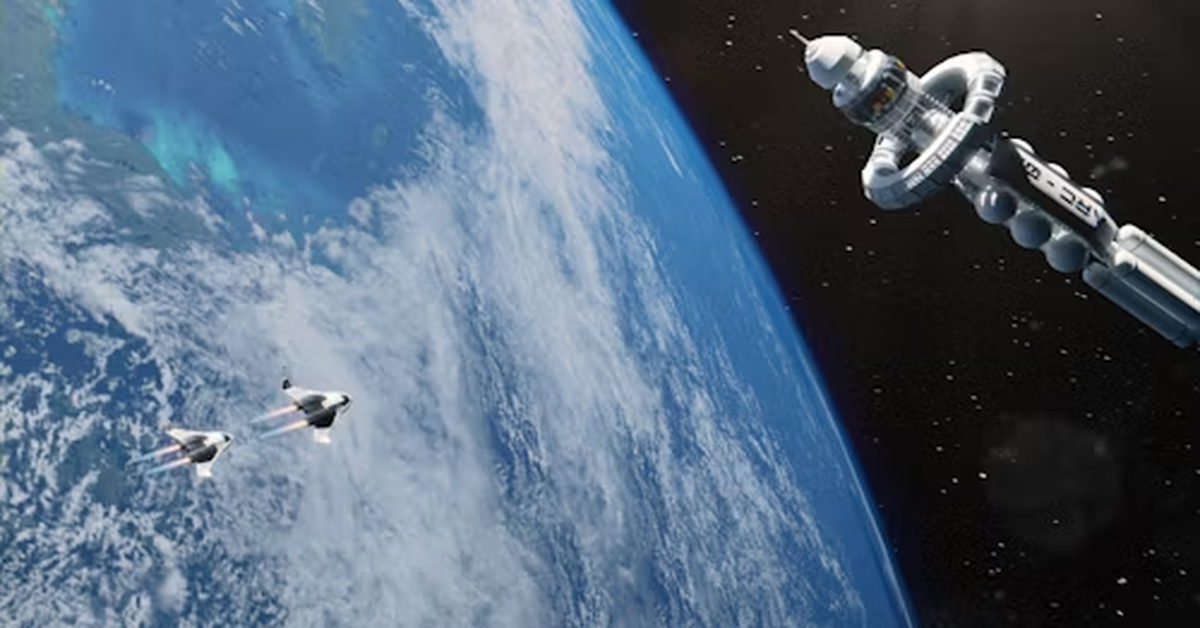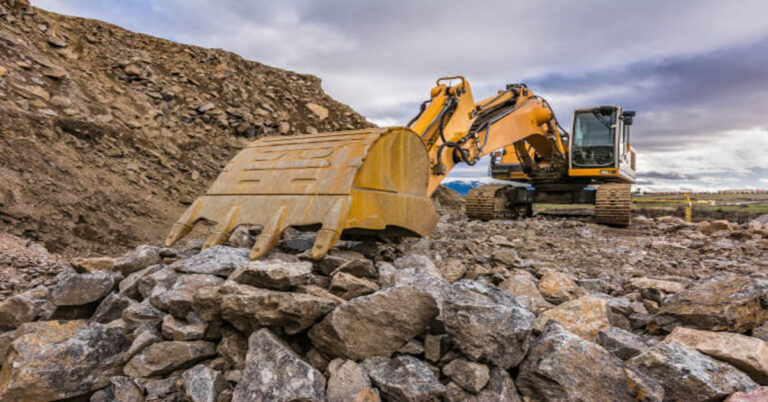
As humanity advances deeper into the cosmos, the concept of orbital defense and military infrastructure is rapidly moving from speculative fiction into serious strategic planning. One of the most fascinating and complex elements of this future is the space force orbital warship carrier — a massive, heavily equipped orbital platform capable of hosting, launching, and supporting military spacecraft and defense systems.
Unlike traditional naval carriers on Earth, orbital carriers are designed to operate in space, orbiting a planet or stationed at strategic positions such as Lagrange points. These advanced structures represent a major leap in defense technology, combining logistics, command control, power generation, and weapon deployment into a single massive asset.
This article provides an in-depth exploration of the concept, structure, function, and strategic value of space force orbital warship carriers. It is entirely original and aims to explain the topic clearly, in rich, structured detail, suitable for academic study, enthusiasts, and defense analysts.
1. Understanding the Concept of a Space Force Orbital Warship Carrier
1.1 Definition
A space force orbital warship carrier can be defined as a large-scale orbital platform designed to carry, deploy, service, and command multiple space-based military assets, including:
- Space fighters or interceptor craft
- Drones and autonomous vehicles
- Orbital defense arrays
- Weapon systems
- Communication relays and surveillance modules
While this technology is still conceptual, the strategic framework behind it is grounded in modern military doctrine: command from orbit, providing speed, reach, and dominance in a domain that has no natural borders.
1.2 Why Orbital Carriers Matter
Orbital carriers are envisioned as space equivalents of naval aircraft carriers — mobile command and deployment platforms capable of:
- Supporting rapid-response defense missions
- Launching and maintaining orbital and suborbital vehicles
- Extending surveillance and communication reach globally
- Protecting critical assets in orbit (like satellites)
- Maintaining strategic deterrence in space
In essence, an orbital warship carrier would extend military power into the space domain, making orbital control as critical as air or sea dominance.
2. Key Components of an Orbital Warship Carrier
The architecture of an orbital carrier is not just about size or power. It is about integration — bringing together propulsion, defense, support, and communications into one autonomous structure.
| Component | Description | Function |
|---|---|---|
| Command Core | Centralized control hub with AI and crewed control stations | Coordinates fleet, systems, and communication |
| Launch Bays | Enclosed hangars and deployment ports for spacecraft | Deployment and retrieval of ships, drones, and vehicles |
| Orbital Weapon Systems | Arrays of kinetic, laser, or railgun-based weaponry | Defense and deterrence |
| Propulsion Modules | High-efficiency ion or nuclear propulsion systems | Orbital maneuvering and station keeping |
| Energy Generation Systems | Solar arrays, fusion reactors, or nuclear modules | Powering systems and weapons |
| Life Support and Crew Habitat | Environmental control, living quarters, medical, and resource recycling | Sustains crew and on-board personnel |
| Shielding and Armor | Layered defense systems (thermal, kinetic, EM) | Protection from space debris and attacks |
| Docking and Supply Ports | External and internal docking bays | Enables logistics, resupply, and maintenance |
| Sensor and Communication Suite | Long-range detection, radar, lidar, and quantum-encrypted communication | Early warning, battlefield awareness, and command links |
Each component contributes to making the carrier not just a vessel, but a floating space fortress capable of sustained operations far above Earth.
3. Propulsion and Orbital Positioning
3.1 Orbital Positioning Strategies
An orbital carrier would be positioned to maximize strategic coverage and minimize response time. There are multiple orbital regimes where such a platform could operate:
| Orbit Type | Altitude Range | Advantages | Challenges |
|---|---|---|---|
| Low Earth Orbit (LEO) | 160–2,000 km | Quick response time, easy access to Earth’s surface | High atmospheric drag, more orbital debris |
| Medium Earth Orbit (MEO) | 2,000–35,000 km | Extended coverage, reduced drag | Higher latency, longer transit for launches |
| Geostationary Orbit (GEO) | ~35,786 km | Constant position over one area, ideal for surveillance and communication | Energy-intensive to reach and maintain |
| Lagrange Points (L1-L5) | Varies | Stable gravitational points ideal for large structures | Complex station keeping and defense |
3.2 Propulsion Technologies
For station-keeping and mobility, orbital carriers would rely on high-efficiency propulsion systems. These could include:
- Ion propulsion: efficient, low-thrust, ideal for gradual orbital changes.
- Fusion or nuclear propulsion: high-power systems enabling faster repositioning.
- Electromagnetic tethers or solar sails: supplementary or emergency propulsion methods.
A hybrid propulsion model would likely be used, ensuring the carrier remains maneuverable despite its massive scale.
4. Onboard Defense and Weapon Systems
4.1 Layered Defense Strategy
A carrier in orbit would face threats ranging from micro debris to hypersonic weapons or orbital interceptors. To counter this, a multi-layered defense system would be necessary.
| Defense Layer | Type | Purpose |
|---|---|---|
| Passive Shielding | Physical armor, Whipple shields | Protection from micrometeoroids and minor impacts |
| Active Interception | Laser and railgun defenses | Neutralize incoming projectiles or drones |
| Electronic Warfare Layer | Jamming, decoys, signal spoofing | Defend against hacking and electronic attacks |
| Stealth and Countermeasure | Radar scattering, heat masking | Make targeting more difficult for adversaries |
4.2 Weapon Systems
While heavily regulated under international treaties, a theoretical orbital carrier could deploy:
- Directed energy weapons (high-powered lasers) for point defense.
- Kinetic interceptor systems for engaging targets at long ranges.
- Swarm drone fleets for flexible, distributed defense or attack.
- Cyber-defense and electronic warfare modules for securing communication networks.
5. Hangars, Docking Bays, and Vehicle Deployment
One of the defining features of a warship carrier is its ability to launch and recover other craft. In orbit, this includes:
| Vehicle Type | Function | Deployment Mode |
|---|---|---|
| Orbital Interceptors | Defensive quick-response craft | High-speed catapult or electromagnetic launcher |
| Stealth Recon Drones | Surveillance and data gathering | Silent ejection with minimal signature |
| Supply Shuttles | Resource delivery from Earth or lunar bases | Standard docking procedures |
| Repair Bots and Drones | Maintenance and construction | Robotic arms and external tracks |
This multi-vehicle capacity transforms the carrier from a static structure into a dynamic operational hub capable of commanding space activity over vast regions.
6. Command, Control, and Artificial Intelligence
6.1 Centralized Command Core
The command core of a space force orbital warship carrier would be its brain — a hardened, AI-augmented control center responsible for:
- Coordinating spacecraft and drones
- Monitoring orbital traffic
- Handling threat detection and response
- Overseeing energy and propulsion systems
- Managing crew operations
6.2 Role of Artificial Intelligence
AI is essential to reduce human cognitive load in an environment where milliseconds can determine outcomes.
Key AI Functions:
- Real-time threat analysis
- Autonomous drone control
- Resource allocation and logistics
- System redundancy management
- Emergency response coordination
An AI-human hybrid command structure would likely balance automation with strategic decision-making.
7. Power Systems and Energy Distribution
An orbital warship carrier must generate and store massive amounts of energy to support its propulsion, life support, and weapon systems.
| Power Source | Advantages | Challenges |
|---|---|---|
| Solar Arrays | Renewable, consistent power supply | Requires vast surface area, affected by shadow zones |
| Nuclear Reactors | High power density, reliable | Requires extreme safety measures, political constraints |
| Fusion Reactors (Future) | Clean, high-output, stable | Still experimental, complex to maintain |
A hybrid energy model—solar for routine operations, nuclear/fusion for peak loads—would offer resilience and redundancy.
8. Shielding, Armor, and Structural Design
Operating in space exposes carriers to:
- Micro-meteoroids
- Orbital debris
- Solar radiation and cosmic rays
- Potential attacks
Layered shielding would include:
- A Whipple shield outer layer to absorb impact energy
- Radiation shielding (regolith or advanced composites)
- Electromagnetic shields to disperse charged particles
The structural design would prioritize:
- A reinforced central spine for strength
- Modular segments for scalability
- Rotating habitats for artificial gravity if needed
9. Strategic Role of Orbital Warship Carriers
9.1 Defense and Deterrence
An orbital carrier would act as a symbol of strategic deterrence, similar to nuclear submarines or aircraft carriers today. Its presence alone could:
- Deter hostile actions in orbit
- Protect critical space infrastructure (satellites, stations)
- Provide immediate defensive response
9.2 Rapid Deployment Platform
By hosting multiple small spacecraft, an orbital carrier allows for instantaneous deployment to any orbital path — a tremendous strategic advantage over ground-based launch systems.
9.3 Command and Control Hub
With advanced communication suites, the carrier would function as a mobile command center, coordinating:
- Global surveillance
- Military and humanitarian missions
- Defense of orbital assets
9.4 Emergency and Civilian Applications
Beyond military use, orbital carriers could play a role in:
- Space rescue missions
- Disaster relief from orbit
- Asteroid monitoring and deflection initiatives
10. Logistical Operations and Resupply
Unlike terrestrial carriers, orbital warship carriers require complex resupply operations. This can be done through:
| Source | Description | Pros | Cons |
|---|---|---|---|
| Earth-based Launches | Resupply from surface facilities | Familiar and controlled | Expensive and time-bound |
| Lunar Bases | Resource transfer from moon | Shorter launch costs (lower gravity) | Requires lunar infrastructure |
| Orbital Depots | Pre-positioned resource hubs | Reduces carrier downtime | Requires complex coordination |
| In-situ Resource Utilization | Mining asteroids or moons | Long-term sustainability | Technologically demanding |
Efficient logistics will determine the operational viability of such carriers.
11. Crew Structure and Life Support Systems
Operating such a colossal platform requires both human expertise and automated systems.
| Crew Division | Responsibilities | Example Roles |
|---|---|---|
| Command Crew | Strategic decision-making, mission control | Captain, tactical officers, strategists |
| Operations Crew | Engineering, maintenance, and logistics | Engineers, technicians, resource managers |
| Flight Wing | Spacecraft pilots, drone operators | Fighter pilots, remote operators |
| Scientific Division | Astrophysics, defense research, communications | Analysts, system designers |
| Medical and Life Support | Crew health, environmental control | Medical officers, biosphere engineers |
| Security Wing | Defense and boarding control | Security officers, rapid response teams |
Life support systems would include oxygen regeneration, water recycling, temperature regulation, and radiation shielding. Redundancy in these systems is essential to sustain crew for extended periods.
12. Legal and Political Considerations
Deploying orbital warship carriers raises significant legal, political, and ethical questions. International treaties such as the entity[“historical_event”, “Outer Space Treaty”] prohibit placing weapons of mass destruction in orbit. However, conventional defense platforms remain a legal gray area.
Key Considerations:
- Compliance with international space law
- Avoiding arms races in orbit
- Ensuring civilian assets are not endangered
- Transparency between nations to reduce tensions
Global cooperation, oversight, and regulation will likely determine how — or if — such carriers become reality.
13. Technological Innovations Driving the Concept
Several emerging technologies support the feasibility of orbital carriers:
| Technology | Role |
|---|---|
| Advanced Composites | Lightweight, strong structural materials |
| AI and Autonomous Systems | Reducing crew burden and response time |
| Fusion Power and Energy Storage | Meeting massive energy demands |
| Orbital Construction Robots | Assembling large structures in space |
| Quantum Communication | Securing command links |
| Precision Propulsion Systems | Maintaining stable orbital positions |
These technologies may converge within the next few decades, transforming conceptual carriers into functional assets.
14. Potential Risks and Challenges
14.1 Technical Risks
- Structural failure in microgravity
- Unforeseen orbital debris collisions
- Power system instability
14.2 Security Risks
- Cyberattacks on AI command cores
- Targeting by hostile forces
- Rogue drone systems
14.3 Political and Ethical Risks
- Triggering militarization of space
- Escalating geopolitical tensions
- Sovereignty concerns over shared orbital zones
15. Future Outlook
While orbital warship carriers remain a theoretical concept, their emergence seems increasingly plausible given:
- Accelerated private space innovation
- State-level interest in orbital defense
- Rapid technological convergence in AI, propulsion, and energy
These carriers could reshape global defense and space operations, creating a new strategic dimension beyond air, land, sea, and cyberspace.
16. Hypothetical Example of an Orbital Warship Carrier Class
| Feature | Details |
|---|---|
| Class Name | Horizon Class Orbital Carrier |
| Crew Capacity | 500–1,000 personnel |
| Length | 1,200 meters |
| Energy Source | Hybrid solar and nuclear fusion reactors |
| Orbital Zone | GEO or Lagrange Point L1 |
| Launch Capacity | 50 interceptor craft, 200 drones |
| Weapons | Laser defense arrays, kinetic interceptors, drone swarms |
| Operational Duration | Up to 5 years without major overhaul |
| Special Features | AI-assisted command, modular expansion sections |
17. Real-World Inspiration and Theoretical Development
While no such carriers exist today, early seeds of this concept are already visible in:
- Large modular space station projects
- Advanced satellite defense initiatives
- Orbital refueling and servicing missions
- Military interest in cislunar domain security
These developments suggest that orbital carriers could evolve from existing infrastructure, rather than being built entirely from scratch.
18. Strategic Implications for Global Security
The introduction of orbital warship carriers would:
- Redefine military balance between nations
- Create new deterrence doctrines in space
- Necessitate global monitoring and arms control
- Increase the complexity of strategic defense planning
Much like the naval aircraft carriers of the 20th century changed warfare, orbital carriers could reshape conflict dynamics in the 21st and 22nd centuries.
19. Common Misconceptions About Orbital Carriers
| Misconception | Reality |
|---|---|
| “They are just giant battleships in space.” | They are multifunctional command and deployment platforms. |
| “They violate space law by default.” | Legality depends on weapons type and deployment protocols. |
| “They will replace all satellites.” | They would complement and defend satellites, not replace them. |
| “They require impossible technology.” | Many required technologies already exist or are in advanced research. |
| “They can’t be defended.” | Layered defenses and stealth make them resilient. |
Conclusion
The concept of the space force orbital warship carrier is not merely science fiction. It is a vision of strategic orbital dominance, built on the foundation of current technological trends. Combining the roles of command hub, launch platform, defense system, and logistics station, it represents the next evolutionary step in humanity’s approach to security and exploration in space.
While the political, ethical, and legal landscape will play a crucial role in shaping its deployment, the underlying technologies are steadily advancing. If realized responsibly, such carriers could serve both defensive and cooperative purposes, ensuring stability and protection in the increasingly crowded orbital environment.
Much like the great aircraft carriers of the past century, orbital carriers may soon become the flagships of a new spacefaring era, symbolizing both technological might and strategic foresight.
FAQs
1. What is a space force orbital warship carrier?
It is a large, multifunctional orbital platform designed to carry, deploy, and command spacecraft and defense systems from space.
2. How is it different from a space station?
Unlike traditional stations, orbital carriers are militarized, mobile, and equipped with weapon and defense systems.
3. What kind of weapons could be installed on such carriers?
Potential systems include directed energy weapons, kinetic interceptors, drone fleets, and advanced electronic warfare modules.
4. Would these carriers violate space law?
They could remain legal if they do not carry weapons of mass destruction, though treaties may need updates to regulate them.
5. How far in the future could orbital warship carriers become reality?
With rapid technological advancements, early operational models may be feasible within several decades, especially with international cooperation.





